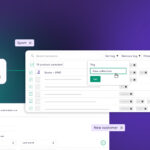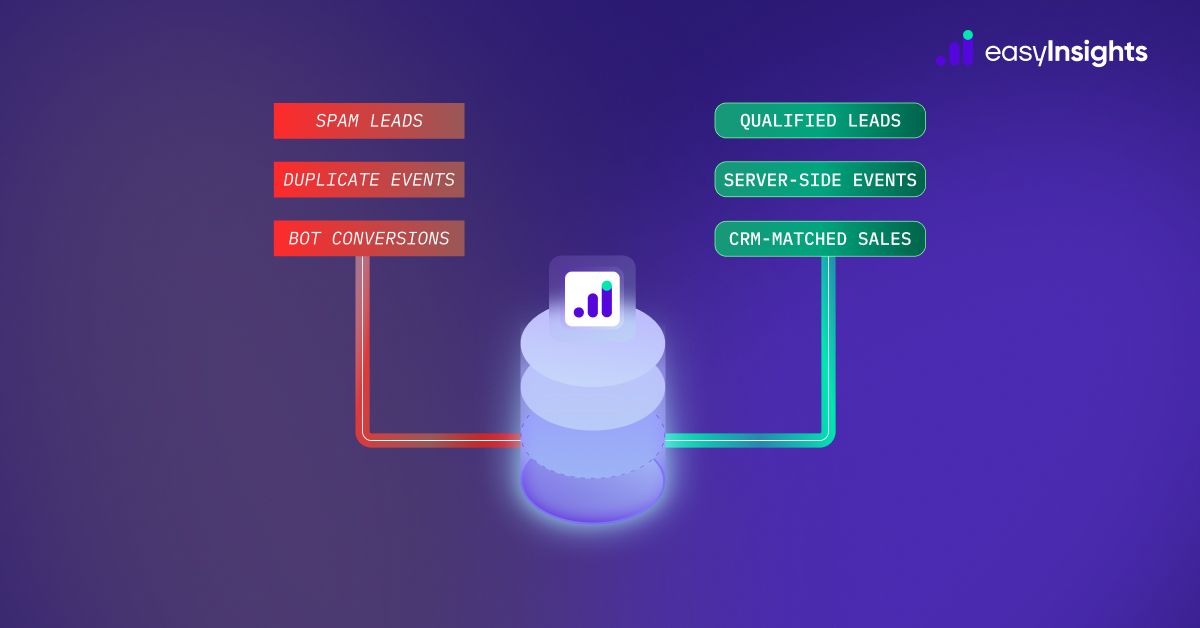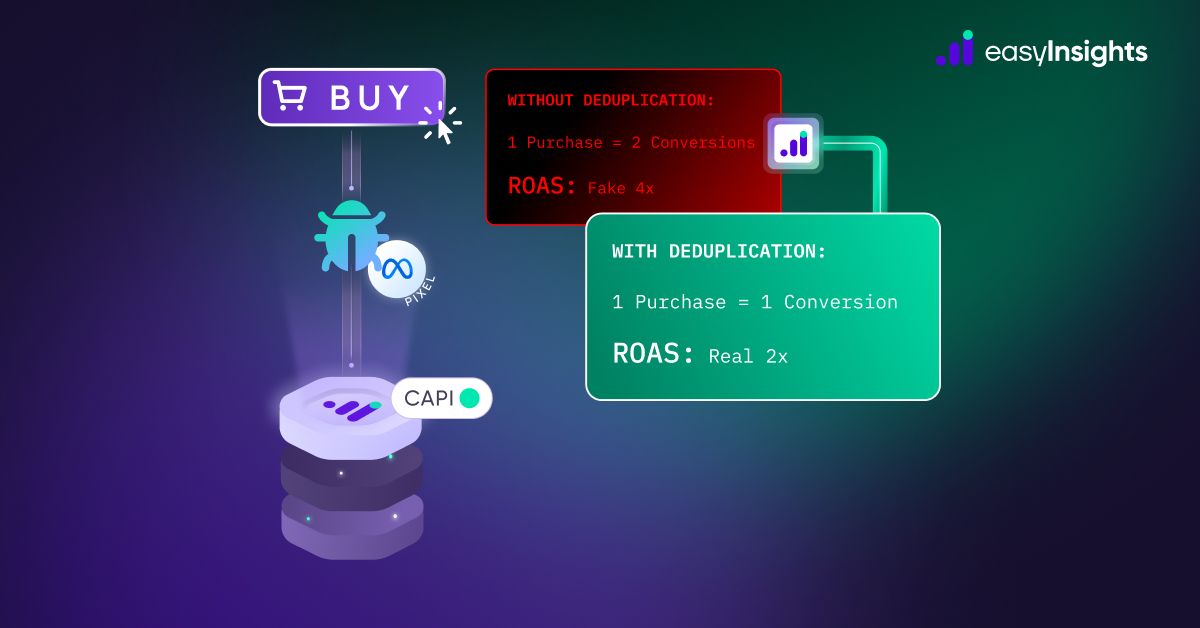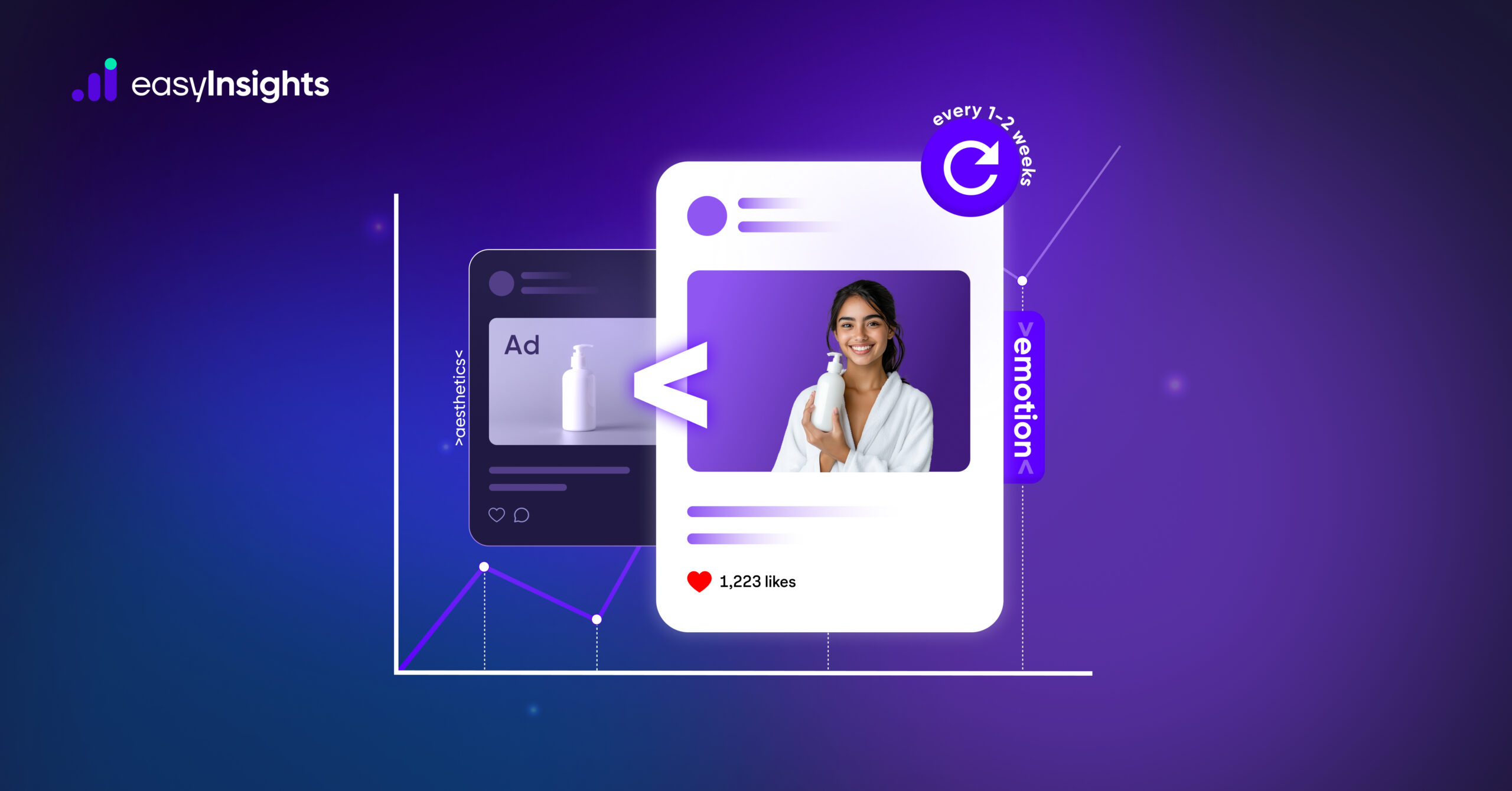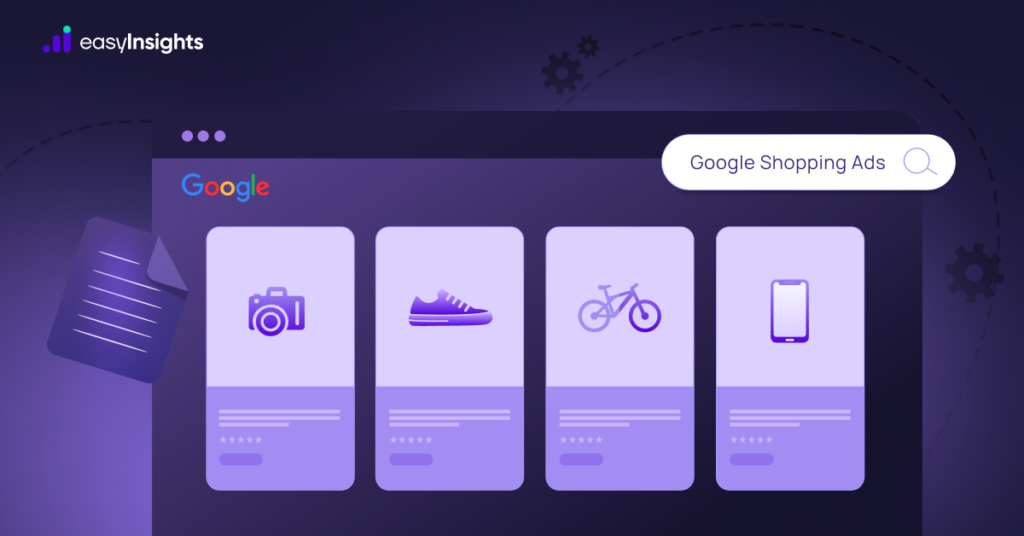
If you’re considering launching a Google Shopping ads campaign and are wondering whether they actually perform, the answer is a resounding YES! Google finds that a staggering 98% of global consumers turn to the net to shop. What’s more, Google Shopping ads account for a whopping 76.4% of all ecommerce spend. Further, they get 85.3% of all clicks on ad campaigns.
In short, it’s where your audience is and where you should be, too. To help you understand just how powerful Google Shopping ads are, we’ve provided a complete A to Z on them. Use this guide to understand how they work, the campaign types, and how to use the product feed to get the maximum out of your marketing campaigns.
Jump ahead to:
What are Google Shopping Ads and How Do They Work?
Also referred to as Product Listing Ads (PLAs), Google Shopping ads are paid advertisements that help ecommerce platforms showcase their offerings right on the Search Engine Results Page (SERP). These ads include images, titles, prices, and other information about your offerings and are visible when they match the user’s search intent. They also feature on YouTube, Google Display Network, and Gmail.
For instance, if a user searches ‘buy Jordan sneakers’, they’ll likely see the following Google Shopping ads on the SERP.

For a Google Shopping ad campaign, you need to:
- Open a Google Merchant Center Account
- Upload product data feed
- Link your Merchant Center account to your Google Ads account
Unlike traditional ads, which leverage keywords to determine when to showcase ads, Google Shopping ads use your product data feed. The platform combines the product data to create your ads and includes your platform’s name, product name, price, images, and any other pertinent information. The way it appears will differ depending on the user’s browser.

Leveraging the details in your product data, Google will match a user’s search to your ads to ensure your offerings are visible only for relevant searches. You can manage your ads using two campaigns: the standard Shopping campaign and the Performance Max campaign, which we will discuss further.
An important step in Google Shopping ad campaigns is creating ad groups. These groups allow you to add structure to your campaigns and ensure that all products are not subjected to the same bid. You can create ad groups based on Google product categories and product types. The more structured your campaigns, the greater control you have over your bid, allowing you to spend your ad budget more efficiently.
Additional read: Google Ads & Microsoft Ads: 9 Innovative Tactics for Campaign Success
Why Should You Consider Google Shopping Ads?
Here’s what Google Shopping ads bring to the table:
- Gain Qualified Leads: Increase the quality of your leads by offering users important information about your products right in the ads. Online shoppers can compare products easily allowing them to land on your page ready to make a purchase.
- Retail-centric Campaign Management: Shopping ads use product attributes rather than keywords to match your ads with user searches. This helps align your ad campaign towards a common goal of driving sales.
- Widen Your Reach: If relevant, multiple shopping ads of your offerings can be visible to the user. If your ads match the user intent, a text ad and a Shopping ad can feature simultaneously, broadening your brand reach.
- Stay Ahead of the Competition: Learn how your products perform in detail. For instance, you can understand how many clicks specific footwear brands get by filtering product views. Further, you can use benchmarking data to get insight into your competitive landscape and recognize growth opportunities through impression share data and the Bid Simulator tool.
Standard Shopping Campaigns Vs. Performance Max Campaigns
As briefly mentioned above, you can manage your Google Shopping ads through two campaigns. Here’s a look at these.
| Criteria | Standard Shopping Campaigns | Performance Max Campaigns |
| Channels where your ads are visible | Google Channels: 1. Google Search 2. Shopping tab 3. Google Search partner websites (if your campaign includes these) 4. Maps (through local inventory ads) | Google Channels: 1. Google Search 2. Shopping tab 3. Maps (through local inventory ads) 4. Google search text ads 5. Google images 6. YouTube 7. Gmail 8. Google Display Network 9. Demand Gen |
| Ad formats | Ad formats include shopping ads and those for local products (local inventory ads) | Ad formats include shopping ads, local inventory ads, display ads, YouTube ads, Vehicle ads, and Display ads |
| Billing | Marketers are charged based on the Cost-per-Click (CPC), and so only have to pay when a user clicks on the ad | Marketers have to only pay for the performance of their campaigns (clicks or CPM) |
| Bidding | Automated bidding strategies include Target ROAS and Maximize Clicks. Manual strategies include Manual CPC. | Only automated strategies are available and include Maximize Conversions (with optional CPA target) and Maximize Conversions (with optional ROAS target. |
| Ad Creatives | Ads are created depending on the Merchant Centre feed. Additional creative assets, such as text, images, video, etc., aren’t available. | Ads are auto-generated depending on the Merchant Centre feed and the assets offered by the marketer in asset groups (text, images, video) |
| Local Inventory Ads | Shopping campaigns only show ads for offerings sold by your platform. Navigate to campaign settings and select the box- ‘Enable ads for products sold in local stores’ to enable local inventory ads. | Local inventory ads are available when a local products inventory feed is attached to the campaign. |
| Additional Features | Customization features such as audience targeting are available | Additional AI features, such as audience signals to help guide campaigns toward your target audience, Final URL expansion, and New customer acquisition goal, are offered. |
Additional read: Google Ads – Marketer’s Guide to Performance Max Campaigns
How Much Does Google Shopping Ads Cost?
The average Google Shopping cost per click is $0.66. This is markedly competitive with Search Ads CPC, which have an average cost of $2.69 per click. However, the average conversion rate for Google Shopping ads is 1.91%, which is lower than the Google Ads average of 2.81%.
Since Shopping ads are cheaper, the Cost Per Action (CPA) is also lower ($38.87 as against $45.37 for all Google Ads clicks). That said, the ROI of your Shopping ads depends entirely on your goals and marketing initiatives. s
Additional read: 8 Google Ads Best Practices to Maximize ROAS
Link Your Product Feed to Google Merchant Center
It’s important you link your product feed to Google Merchant Center as the quality of your feed directly impacts the quality of your standard shopping and performance max campaigns. After all if your ad campaigns don’t have the right data on your products, convincing users you offer value is going to be a task. So, here’s how to go about it:
Step 1: Navigate to Google Merchant Center, click on ‘Products’ from the left-hand side menu, and then click on ‘Add products’.
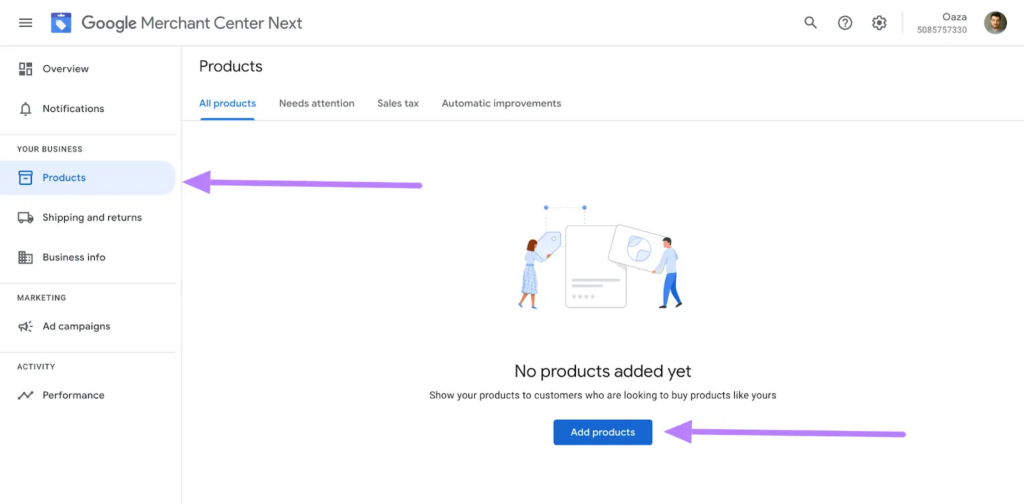
Step 2: Click on ‘Add products from file’ and then select ‘Continue’.
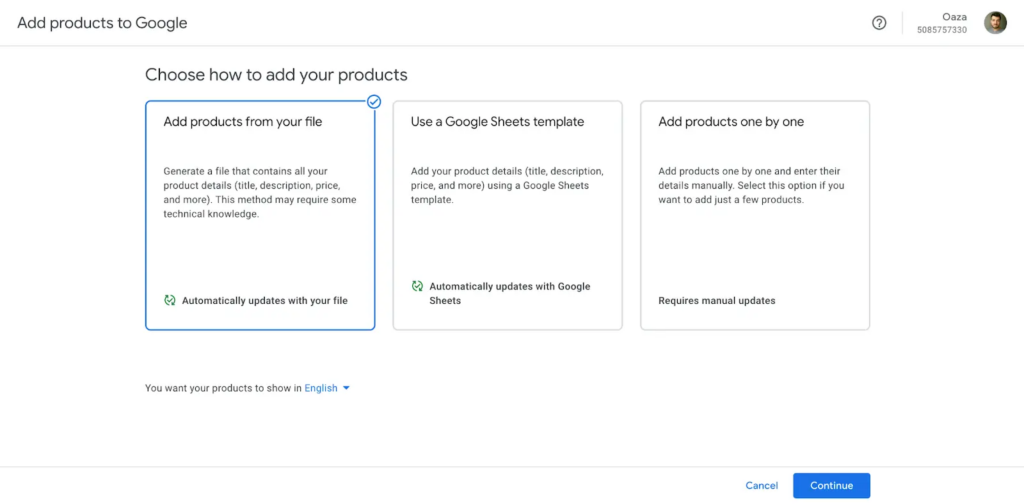
Step 3: Select the country and language you’d like your product ads to be displayed in.

Step 4: Now, you can either enter the URL for the product feed file or upload it from your device.
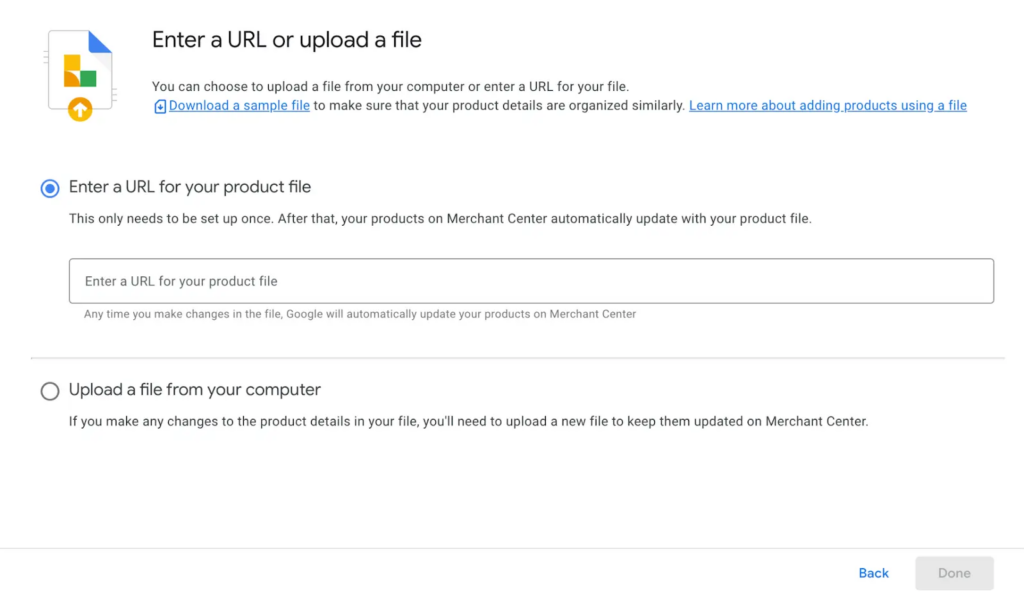
Step 5: After choosing your option, add your product file and then select ‘Done’.
That’s it! Your products will be added to the Google Merchant Center.
Drive Your Ad Performance with EasyInsights
Leveraging Google Shopping ads is a powerful way to hit your sales targets and generate revenue for your e-commerce business. After all, it allows online users to make a beeline to your platform, giving you high buyer-intent users faster.
Now that you have your campaign platform locked down, it’s time to look ahead and answer the question: Is there more I can get through my Google Shopping ads campaigns? The answer to this question is also a yes.
Your campaigns are a treasure trove of data that you can leverage to improve your marketing efforts and achieve your goals. All you need is a next-generation no-code marketing data platform like EasyInsights. Integrate your Google Shopping Ads data in EasyInsights, and you get actionable, insightful, and business-ready data.

EasyInsights works with raw Google Shopping Ads data for data activation and data enrichment in a few key ways:
Data Collection and Transformation:
- EasyInsights connect directly to your ad platform allowing it to access and extract the raw data you’ve collected.
- Data Transformation: EasyInsights then cleans, normalizes, and enriches the data to make it usable for activation purposes. This may involve tasks like:
- Formatting data: Ensuring all data points are in a consistent format.
- Handling missing values: Filling in missing data points or removing them according to your preferences.
- Enriching data: Adding additional data points from other sources to create a more comprehensive picture of your customers.
Data Activation:
- Segmentation and Targeting: It allows you to segment your audience based on various criteria like demographics, behavior, and interests using the enriched ad platform data.
- Sending Events to Ad Platforms in Real-Time: It allows you to send events like “Add to Cart” and “Checkout Initiated” to Meta Ads and Google Ads to optimise algorithm for more precise targeting.
- Multi-channel Marketing: You can then use these segments to activate your audience across different marketing channels like email, social media, and advertising platforms.
- Customer Relationship Management (CRM): The data can be used to personalize outreach and interactions with customers within your CRM system.
- Marketing Attribution: EasyInsights can help you understand how different marketing channels contribute to conversions and optimize your marketing spend accordingly.
EasyInsights is a marketer’s preferred tool for first party data activation. In this age of cross-channel marketing, EasyInsights offers a comprehensive platform to collect, store, and transform all your first-party data.
EasyInsights enhances marketing campaign efficiency in a cookieless landscape with accurate ad signals. It helps brands step away from surface-level metrics and unleash the potential of first-party data to optimize marketing strategies, ensuring a superior Return on Ad Spend (ROAS). It does all this, while being a highly affordable no-code platform with an exceptional customer support apparatus.
Sign up for a demo today to see EasyInsights in action.


